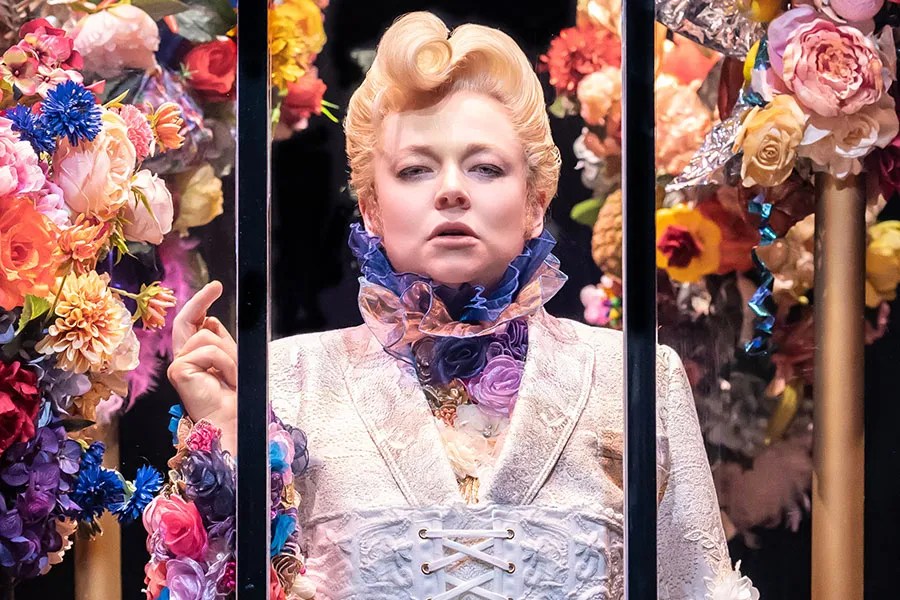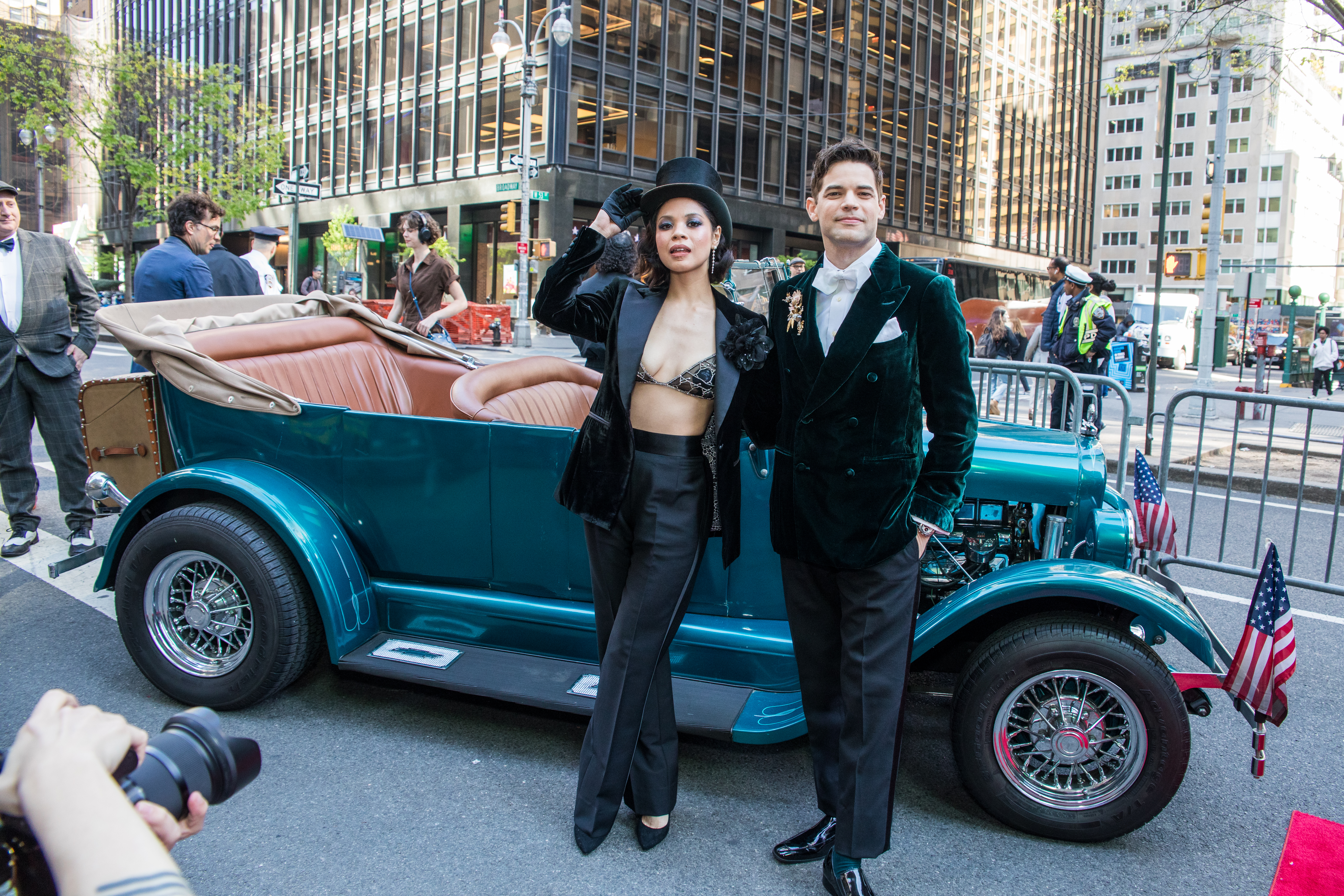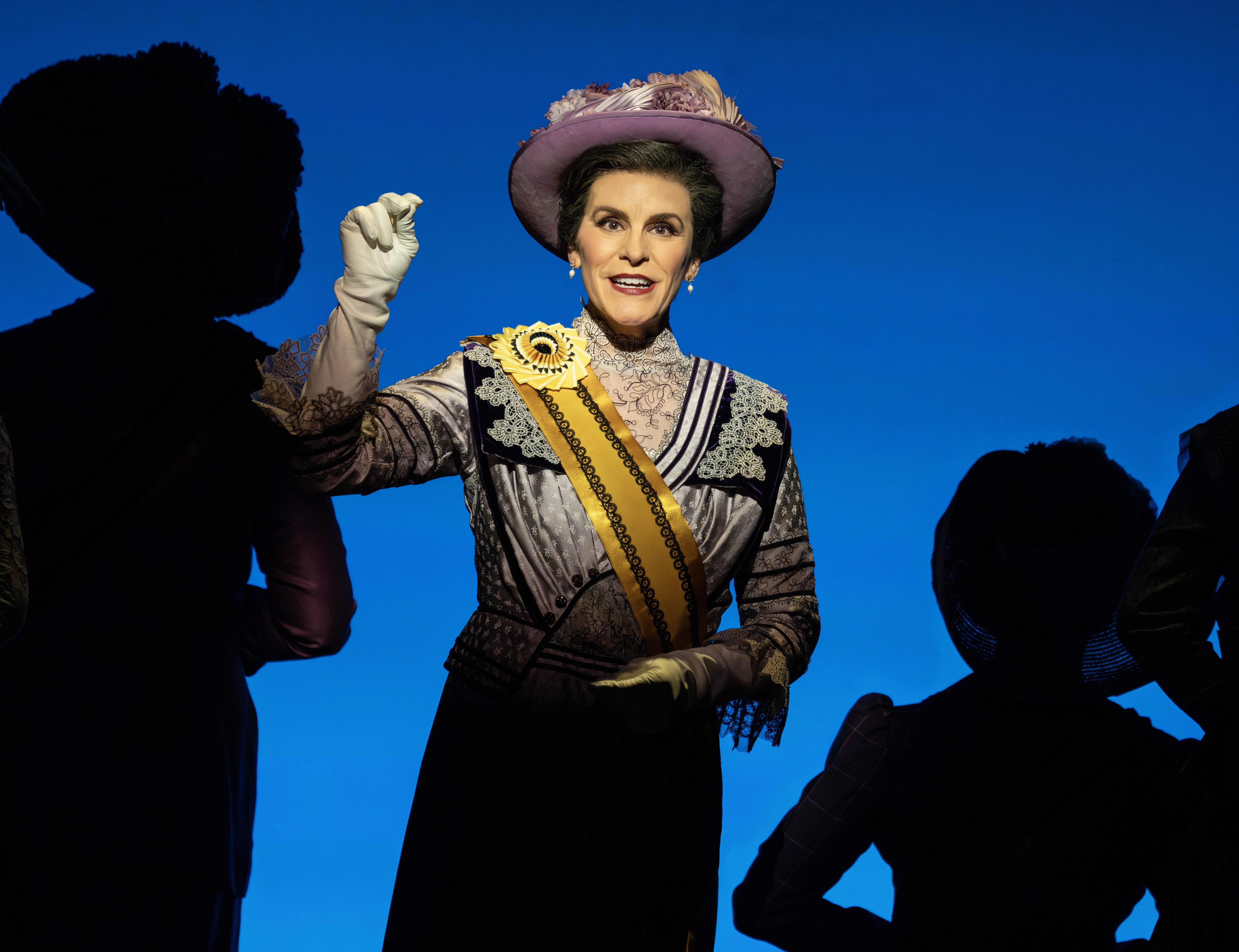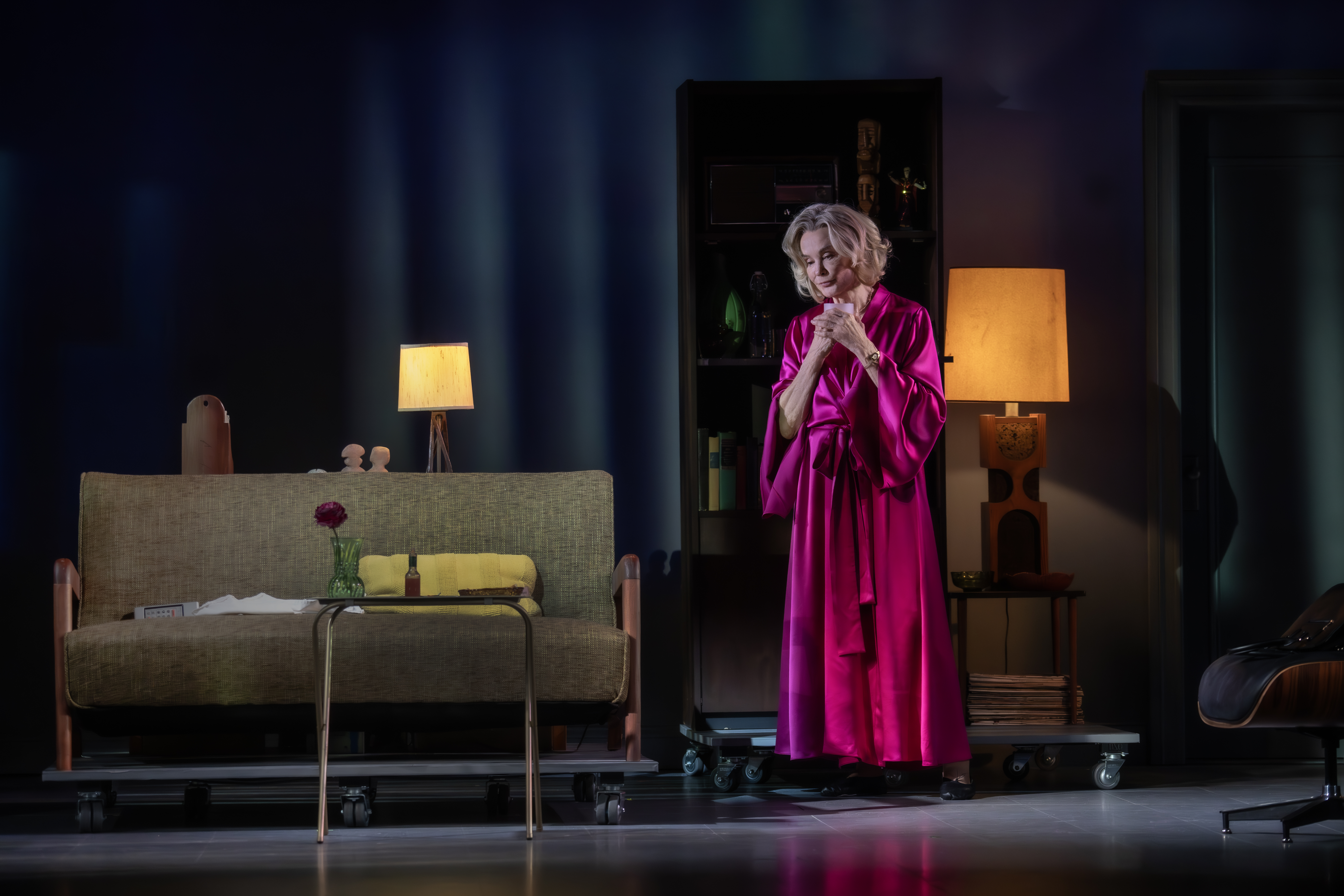Review: Succession‘s Sarah Snook and a Phalanx of Cameras Bring Dorian Gray to London

(© Marc Brenner)
When Oscar Wilde was writing The Picture of Dorian Gray, his novella about vanity, superficiality, and the fallibility of aristocracy, he probably didn’t expect such themes to remain just as, if not more, pertinent over a century later.
Now adapted and directed by Australian theater maker Kip Williams and presented in the West End by Emmy winner Sarah Snook (fresh from her colossal turn as Shiv Roy in Succession) alongside a brigade of 14 stagehands and live stream video cameras, the tragic and mystical tale of Dorian Gray comes to have a fresh clarity. It’s a meditation on the intoxicating nature of image and the psychological and moral degradation that accompanies obsessive narcissism.
The original story is told with relative faithfulness in Williams’s adaptation. It plots the psychological demise of Dorian, a strikingly handsome young man who, through some miraculous wonder in the late 1890s, remains the same age while a portrait of his face ages with every sin he commits. As the years progress and those around him decay, Dorian remains a pleasure-seeking epicurean, lusting for carnal release while his youthful looks remain unchanged.
With a flock of screens floating above her, Snook plays every single character in Wilde’s text, from Dorian, to his hedonistic mentor Lord Henry Wotton, and tortured artist Basil Hallward. Cameras beam the actor’s face out large – eyes wide as she remains transfixed by the lenses around her. Nothing is obscured from view: stage managers, costume changes, and the bare brick of the stage are all shown by the camera. It’s reminiscent of Jamie Lloyd’s award-winning Sunset Boulevard, but much more haphazardly kaleidoscopic, full of color, dazzle, and flare.

(© Marc Brenner)
The magic of digital trickery is employed to great effect. Prerecorded characters (also played by Snook) are keyed into frames with their own sections of the dialogue. For fractions of a second, you forget who Snook is playing live, and who is some timeless capture from the past. It creates a superb dramatic conceit, like watching a man surrounded by the intangible whispers of ghosts.
Gradually, the bulkier cameras are replaced by smart phones. Snook employs filters and facial distortion to show how far people transform their digital footprint in order to appease some innate craving for perfection. The contemporary, cutting message at the heart of Williams’s adaptation is foregrounded. Immorality is impossible to mask, even when splendor lies on the surface. The show owes an overwhelming amount of its success to video designer David Bergman and lighting designer Nick Schlieper, each creating rich, textured frames that are lifted by Marg Horwell’s costumes.
Snook’s performance is playful yet unrelenting, essentially nonstop for almost two hours (sans intermission). Williams has her deliver the tale with a similar staccato to something from a Wes Anderson movie, at times monotone and frantic. As the show progresses and Dorian’s own mental state frays, so too does her delivery. It’s an excellent case of control informing character.
In a big year for video on stage in the West End, The Picture of Dorian Gray highlights just how rich a digital canvas creatives have to work with, from broad brush strokes to the tiniest flecks of detail.










